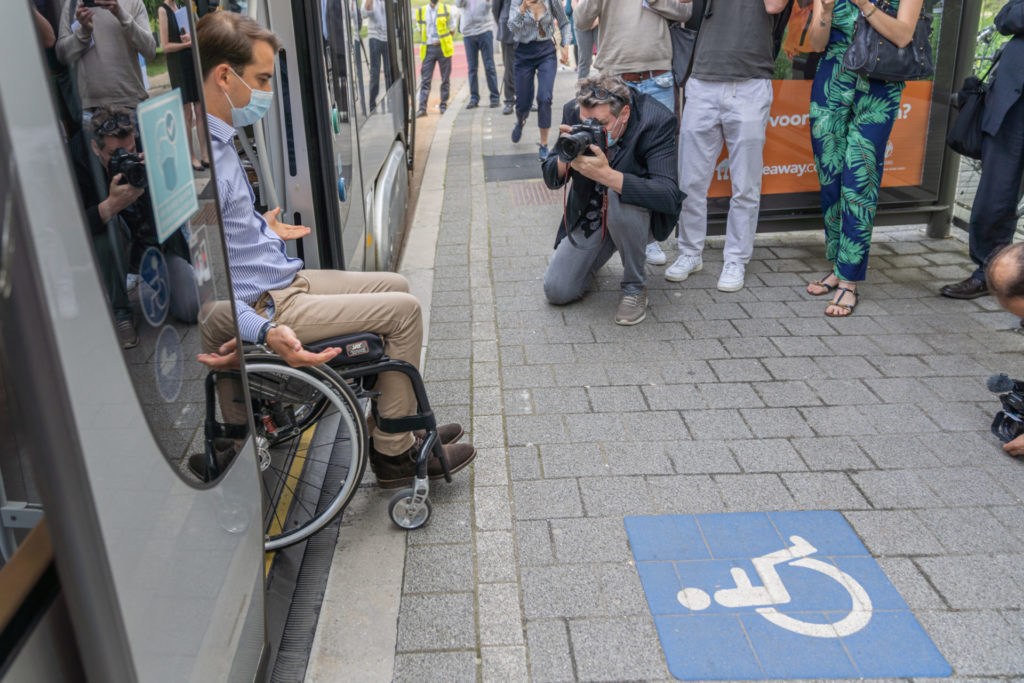Brussels public transport operator STIB announced its plans to improve the accessibility of its tram network for wheelchair users within the next ten years.
The solution, created in consultation with the Collectif Accessibilité Wallonie Bruxelles (CAWaB), combines a raised platform with the insertion of rubber platform edges to fill the horizontal space between the platform and the tram, which wheelchair users have complained makes getting on and off without assistance difficult.
"The STIB network is becoming increasingly accessible to people with reduced mobility, particularly with the arrival of new low-floor vehicles. Adaptations to the infrastructure should also contribute to smoother use of public transport for everyone, which is why we are now also adapting platform edges," Brieuc de Meeûs, CEO of STIB, said in a press release published on Wednesday.
These changes will also make trams more accessible for parents with prams, elderly people, and travellers with rolling bags, among others.
Related News
- SNCB's new cycling strategy aims to make it easier to combine bike and train
- SNCB happy with tests of reservations on coast trains
Newly constructed platforms will be made at the ideal height and platform edges will be installed along their entire length.
Existing platforms that will not be completely renewed in the near future will be raised locally and a platform edge will be added where the platform is raised and where tram door opens to lead to the seat reserved for wheelchair users, which will be indicated with a blue tile with the international symbol of accessibility.
"The CAWaB is delighted to see this project come to fruition. This very practical solution will gradually improve the accessibility of the network for users who were previously unable to use the tram. We look forward to the roll-out of the system with the platform edges at the stops. This will eventually provide a new opportunity for many citizens to travel independently," said Mathieu Angelo, director of CAWaB.
Before officially rolling out these changes, STIB began by testing this system on the new line 9, as well as at a dozen other stops to determine its advantages and disadvantages.
The final version of the type of platform edge that will be installed on the network as part of a public contract was determined based on these tests.
"Taking into account the needs of people with reduced mobility is a matter of social justice and also allows us to make our trams, buses, and metros comfortable and attractive for everyone. It is, therefore, a priority for STIB and Brussels Mobility, and every year more than 60 stops are refurbished to the highest standards," Elke Van den Brandt, Brussels Minister for Mobility, said.
STIB will now start the gradual introduction of this new technology on its entire tram network and estimates that it will be able to fully refurbish half of the tram stops, whilst finalising the local elevations and installation of platform edges over the next ten years.

